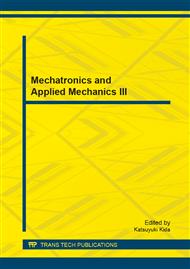p.603
p.611
p.616
p.623
p.629
p.634
p.640
p.644
p.650
An Approach of Systematic Engineering of Green Manufacturing Based on Optimization of Resources and Environmental Attributes
Abstract:
In order to meet manufacturers needs of making progresses in environmental techniques, a practical approach of systematic engineering of green manufacturing (SEGM) based on the optimization of resources and environmental attributes has been applied to plan some general mechanical productions running in a system of workshop. The influencing factors involved in manufacturing productions and the operational and scheduling parameters oriented to environmental attributes is discussed and solved. The solution of the operational variables determines the practical details of the resources and energy running in workshop productions. A practical case for thermoelectricity valves is studied in this paper. Evident clues verify that SEGM approach has taken some optimistic effects on the resources and environmental attributes of general productions in workshop system.
Info:
Periodical:
Pages:
650-653
Citation:
Online since:
February 2014
Authors:
Price:
Сopyright:
© 2014 Trans Tech Publications Ltd. All Rights Reserved
Share:
Citation:


